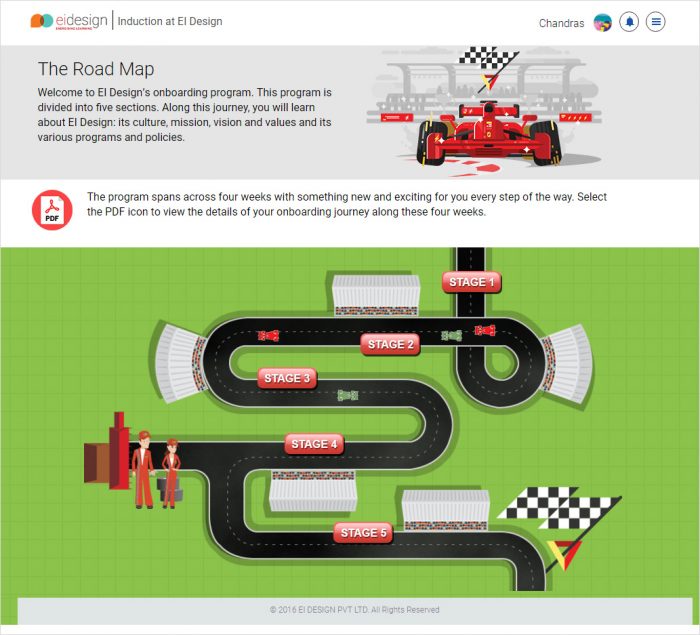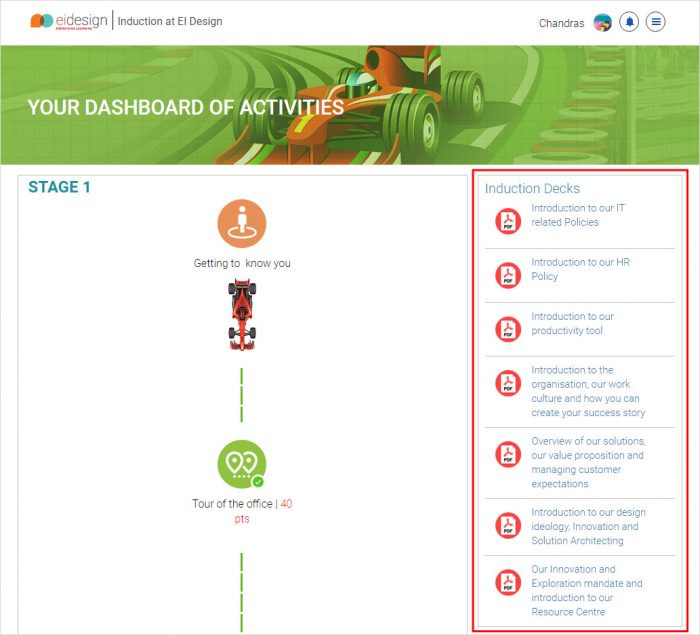
In this article, I highlight five compelling reasons why you should evaluate a blended training approach that combines classroom and online training. I also share two examples to show how you can use it to create a high-impact blended training.
What Ιs Τhe Βlended Τraining Αpproach?
As the name suggests, the term blended training, or else hybrid training, combines different learning techniques. It offers a combination that brings in the best of both forms of training, namely:
- Instructor-Led Training (ILT)
- Online training, eLearning or mLearning
As it offers a blend of both formats facilitated as well as self-paced, it maps more effectively to suit the learning expectations of a wider audience.
While the pressure on training budgets may often trigger conversion of ILT programs into eLearning or online training programs; it is equally important to assess if a middle of the road, that is, a blended delivery offering a combination of classroom and online training, may be the right answer.
What Is Triggering The Adoption Of Blended Training Approach Over Instructor-Led Training, Or ILT?
The push from learners is probably the biggest factor for that. This is driving the momentum to convert Instructor-Led Training, or ILTs, into blended training. If not fully online or eLearning programs.
Certainly, pressure on budgets and a need to reach a wider audience in lesser time are two other factors. Actually, these two are significant drivers from the organizational perspective.
What Are The Benefits Learners And Organizations Gain If They Adopt A Blended Training Approach Over A Traditional ILT?
Benefits For The Learners
- The blended training approach is learner-centric and provides better control to the learner in adjusting the pace at which they want to learn.
- It also gives them the flexibility to pick up the online resources in case they missed the ILT session or to refresh their knowledge post the workshop.
- The supplementary online training provides them a self-paced learning track. Also the online resources are available 24×7 now.
- The blended training offers a significantly better collaboration, including online discussions, messaging, feedback, and a platform to communicate with peers as well as instructors.
- Research confirms that retention levels of online training are higher than face-to-face facilitated sessions. Therefore, blended training approaches lead to higher levels of retention for learners.
Benefits For The Organizations
- From the organizational perspective, Virtual Instructor-Led Training, or VILT enables organizations to reach a wider audience in a significantly shorter time. This comes in complete contrast to the traditional Instructor-Led Training, or ILT approach.
- As you convert the ILT program to a blended training mode, the seat time also becomes shorter. For instance, a 5-day face-to-face workshop may now need a maximum of couple of days of workshop. Moreover, you can balance the learning using online resources.
- Additionally, the online framework enables the instructors to assess the learners’ performance online and far more quickly.
- More significantly, with a blended training approach, organizations can tap into the prevailing online strategies, like Microlearning or Gamification. They can also adopt collaborative social learning to create supplementary online trainings. Usage of these approaches provides an immersive learning experience aimed at better recall, retention and application.
- The supplementary online courses or resources facilitate a continued learning post the workshop.
How Do Learners Respond To Blended Training Approach?
Each learner has a different learning style and they relate differently to a given training format.
- Blended training offers a broader set of options to the learners and can match a more varied set of learning styles.
- Added to this, there is the flexibility that blended training provides. Even if they miss the facilitated session, they have access to the same resources online now.
- Today, you can design online courses or supplementary resources to support multi-devices including tablets and smartphones besides desktops and laptops.
- Particularly, online supplementary resources can be designed using a wide range of innovative formats, like Interactive PDFs, eBooks/Flipbooks, Interactive videos, and so on.
- These can be accessed by learners on the device of their choice, when they need and as often as they require. All of these help the learners retain the information and re-use it when the need arises again.
How Can Blended Training Be Delivered?
Blended training solutions can be rendered in multiple ways based on the nature of training. Broadly, this maps to:
1. Virtual Instructor-Led Training, Or VILT
Here, the training is facilitated by an instructor, just like in ILT, but a virtual platform is used to connect learners who can be geographically spread out. The session integrates many online aspects like polling questions, online questions, and breakout rooms to conduct group activities. These sessions can be recorded and made available to participants as an online learning aid. The instructor can provide pre-workshop material in an online format that is accessible to the learners. Online delivery also enables the instructors to obtain feedback quickly. Since the assessments are online, the results can be shared quickly and more significantly, this data can be used to track the learners’ performance and determine the training impact.
NOTE: In this case, the primary training is facilitated or instructor-led, and eLearning or online training supplements it.
2. Blended Approach Where ILT/VILT Complements The Online Or eLearning Delivery
Certain training needs cannot be mapped readily to a pure ILT or pure eLearning formats. In fact, they need both components. A good example is an induction and onboarding program where significant parts of the training can be offered in a self-paced, eLearning format. However, to successfully induct and onboard an employee, several components of this program need face-to-face sessions. In fact, some sessions will greatly benefit with group activities.
NOTE: In this case, ILT and eLearning-based training complement each other.
Examples: How Can You Enhance The impact Of ILT By Adopting A Blended Training Approach?
Let me share two examples that will help you see the value that a blended training approach will bring.
Example 1: Features our platform eSpace, a unique online framework for offering ILT and blended learning that enables you to go beyond the traditional ILTand blended delivery to a new-age digital experience.
eSpace retains the edge of the ILT delivery and offers the benefits and flexibility of online delivery. This unique framework allows you to offer ILT or blended training through an online platform. It is a cloud-based system and works on all devices including tablets and smartphones.
You can create learning paths featuring Microlearning nuggets for blended delivery. You may also integrate Social Learning features to provide higher-impact learning.
eSpace gives you the opportunity to:
- Provide Access At A Single Source For ILT Material: Learners can share pre-workshop online material before the training session. They have an ongoing access to it, both during and post workshop.
- Give Instructors Control: They can define the learning path and integrate all the job aids required for training acquisition and eventually its application on the job, thereby establishing a performance gain that businesses want to see.
- Communicate And Collaborate: There are several features to facilitate communication with groups and individuals.
- Engage And Contribute: The tool offers different features to take feedback from participants during the training.
Take a look at this video to see the features of our eSpace platform and how it can be used to enhance the effectiveness of Instructor-Led Training and blended learning deliveries.
Example 2: For our own Induction and Onboarding program, we use a blended training approach.
Part 1 – Online Learning Path: The essential elements of induction are available to the learner through the online portal, which supports multi-devices including smartphones and tablets. The learner goes through a multi-stage learning journey. The journey features various learning resources in microlearning format.
Part 2 – ILT Supplement: At each stage of the learning journey, we do an online assessment of the learner’s progress. We also provide additional face-to-face, facilitated ILT sessions. The focus of the facilitated sessions is to push knowledge acquisition to application. We must then also ensure that the new inductee can begin contributing quickly and effectively.
The online portal features innovative approaches, including:
- Microlearning
- Learning paths
- Social learning
- Gamification
- Millennial-centric designs
I hope this article gives you a balanced perspective as you evaluate the transition of your ILT programs into online training modes.
I firmly believe that a middle-of-the-road approach is often a more sensible choice if you are in early stages of eLearning adoption. It is also a better choice where learning gains are directly linked to a human intervention. If you have any further queries, please contact me at apandey@eidesign.net.
Also Read:





